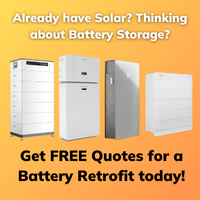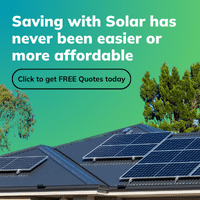Solar power technology is not a recent development. In fact, it dates back to the mid 1800s to the industrial revolution when solar energy plants were developed to heat water that created steam to drive machinery. Continue reading below for a brief solar panel history.
 Get a solar quote on solar power systems from Energy Matters
Get a solar quote on solar power systems from Energy Matters
Solar panel history
In 1839 Alexandre Edmond Becquerel discovered the photovoltaic effect which explains how electricity can be generated from sunlight. He claimed that “shining light on an electrode submerged in a conductive solution would create an electric current.” However, even after much research and development subsequent to the discovery, photovoltaic power continued to be very inefficient. People mainly used solar cells for the purpose of measuring light.
Over 100 years later, in 1941, Russell Ohl invented the solar cell, shortly after the invention of the transistor.
How solar panels work
Light (photons) striking certain compounds, in particular metals, causes the surface of the material to emit electrons. Light striking other compounds causes the material to accept electrons. It is the combination of these two compounds that can cause electrons to flow through a conductor. Thereby creating electricity. This phenomenon is what we term the photo-electric effect. Photovoltaic (or PV) means sunlight converting into a flow of electrons (electricity).
Solar power is a rapidly developing energy source in Australia and around the world. The potential for using the sun to directly supply our power needs is huge.
Once made, solar panels can generate electricity without any waste or pollution. This means that there is no dependence on the Earths natural resources. They have no moving parts so modules are very reliable and have a long life span. Also, solar panels are relatively easy to install and are very low maintenance.
A useful characteristic of solar photovoltaic power generation is that any scale of installation is possible. Compare this to conventional forms of power generation that require large scale plant and maintenance.
Solar panels allow you to generate power close to the place of consumption. This removes the need to transport and distribute electricity over long distances to remote areas.
Read our 10 tips for getting a solar power system or our solar panel reviews You can also learn how to calculate how many solar panels you’ll need to power your Sydney, Melbourne, Brisbane, Perth or other city home.













































